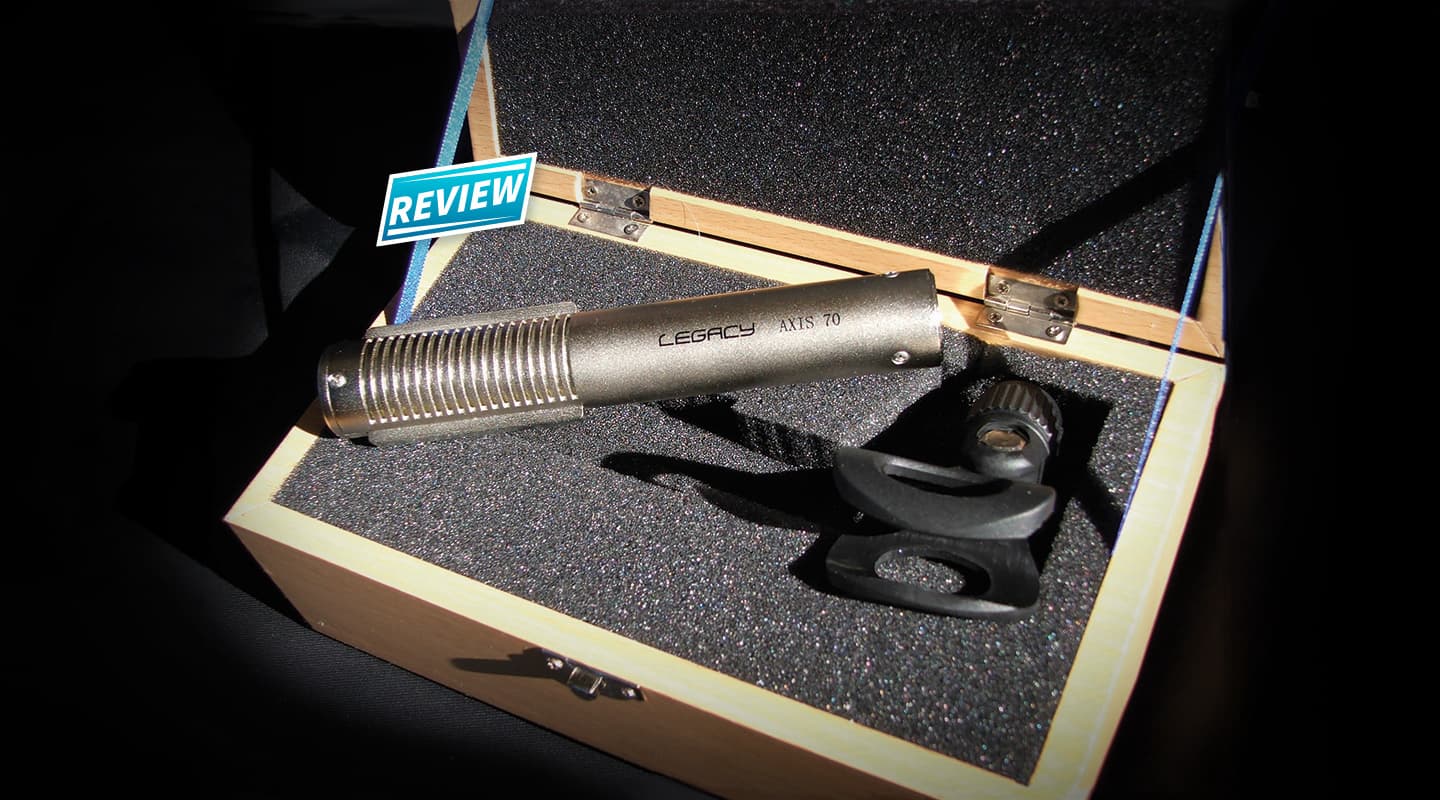
Review: Legacy Axis 70
Ribbon microphones are back with a vengeance, and now finally, they’re also available at bargain prices.
Review: Calum Orr
By now, I think it is fair to say everyone understands a ribbon mic’s potential as an antidote to the tizzy harshness that trebly instruments recorded into digital mediums can produce. The natural top-end roll-off characteristics that ribbons exude are very flattering on many sources. As a result, the audio sector has seen a veritable ‘boom’ in production of ribbon mics in the last five years, and almost everyone is in on the act. There are all manner of large and small importers utilising the Chinese manufacturing sector to deliver designs to the West at incredibly low prices.
Some designs are ‘original’ (in appearance at least) while others are closely styled on tried and true classics. The Legacy Axis 70 reviewed here falls firmly into the latter category. At first glance, the mic looks exactly like a Royer 121. A closer inspection, however, reveals significant differences. Firstly, the name ‘Legacy Axis 70’ is emblazoned somewhat gaudily along the main shaft of the mic, and secondly, the build quality is nowhere near as refined. It’s immediately apparent that the head of the mic doesn’t quite align with the body and the metal machining is not quite as nice as the vastly more expensive and significantly more refined American-made Royer. Another shortfall in appearance is the Axis 70’s wooden case. Where the Royer has a velvet-lined, cherry wood box, the Legacy’s box is comprised of contact-covered MDF, with no lining to speak of.
EYES WIDE
Superficial criticisms aside, let’s cut to the chase because you can’t judge a book by its cover, nor a mic by its casing. For the weeks I’ve had this mic in my kit, I’ve continually assumed it would eventually fail me. Indeed, I’ve expected it to fall down in most applications I’ve tried it on. Instead, I’ve repeatedly found myself muttering these words: “Can this $199 Axis mic thingy really sound as good as I think it’s sounding?” I quite literally threw the kitchen sink at it (well, not literally I s’pose): room and overhead miking duties on a drumkit, close and distant miking of guitar amps, vocals and violin. As a mono overhead or ‘out the front’ of the kit, the Axis 70 really shone, requiring next to no EQ. On electric guitar it wasn’t as refined as a Royer, but geez, I still dug its tone. It tastefully negated the shrill tone of a Musicman with 10-inch speakers, and handled the high SPL of the amp very well. (The Axis 70 has a published SPL rating of 137dB.) I also achieved great results on vocals, both with the Axis 70 acting as the main mic on its own, or as a second ‘sides’ mic (two feet back from the singer with the figure-8’s null point directed towards the voice).
On percussion and acoustic guitar I still found myself (as I usually do) turning to dynamic or small and large diaphragm condenser mics, as these sources usually require a different kind of focus. The Axis was still pretty good at capturing these types of sounds, albeit in a more ‘relaxed’ fashion. As is so often the case with ribbon mics, the Axis responded very well to EQ – one of the great advantages of ribbon mics is that their flat frequency response makes them well suited to high-end shelving EQ. Drums and guitars recorded through the Axis 70 responded nicely to a good dose of top-end shelving EQ without ever feeling like the upper midrange frequencies were trying to race one another down my ear canals!
FRONT TO BACK
During the review I discovered the Axis 70 has a slightly duller rear side. This gives it similar characteristics to the Royer 121’s design whereby the ribbon is offset slightly in the magnetic gap so that, under heavy SPLs, the ribbon can flex a little, while still remaining in the magnetic field. This is actually a patented characteristic of Royer’s, which enabled the American company to recently force Nady to cease production of its RSM-3, which had the same design principle. (Nady’s second-generation RSM-3 reverted back to the standard centred ribbon placement.) After inspecting the Axis 70, I couldn’t really tell if it had Royer’s ribbon placement design or not.
Regardless, the duller rear response of the Axis 70 may mean it’s less suitable for MS miking techniques. However, given that most folk will be using these mics on guitars, horns, vocals and drums – and given the price – this tonal unevenness will be of little consequence. Indeed, a duller rear-end response has as many advantages in general recording situations as it does disadvantages.
PAIR OF ACES
For mine, a pair of these above a drum kit for under $400 could possibly be the best investment a project studio could make. Even if you were worried about them being not all the way ‘pro’, you could always do as some folk have done, and go down the modification path. On many forums, users are discussing how these cheap Chinese ribbons can have a screen modification and a new transformer from the likes of Cinemag or Lundahl fitted. Check out:
www.octavamod.com or Google ‘ribbon mod’ if you want to give it a go yourself. Not that I’m suggesting you do, as straight out of the (MDF) box the Axis 70 absolutely rocks.
Aside from my earlier gripes regarding the build quality, there is one final qualm I have with the Axis 70 ‘kit’. The supplied mic clip only just holds the mic in a stable position and during the review I made sure to tape it so the mic didn’t hit the deck. For such a nice mic it would have been sensible to supply the end user with something decent, but at this price you really can’t complain. Buy one!
















RESPONSES